Home Remedies For Jock Itch: 13 Fast-Acting Solutions
Relieve jock itch naturally with simple remedies and common ingredients!
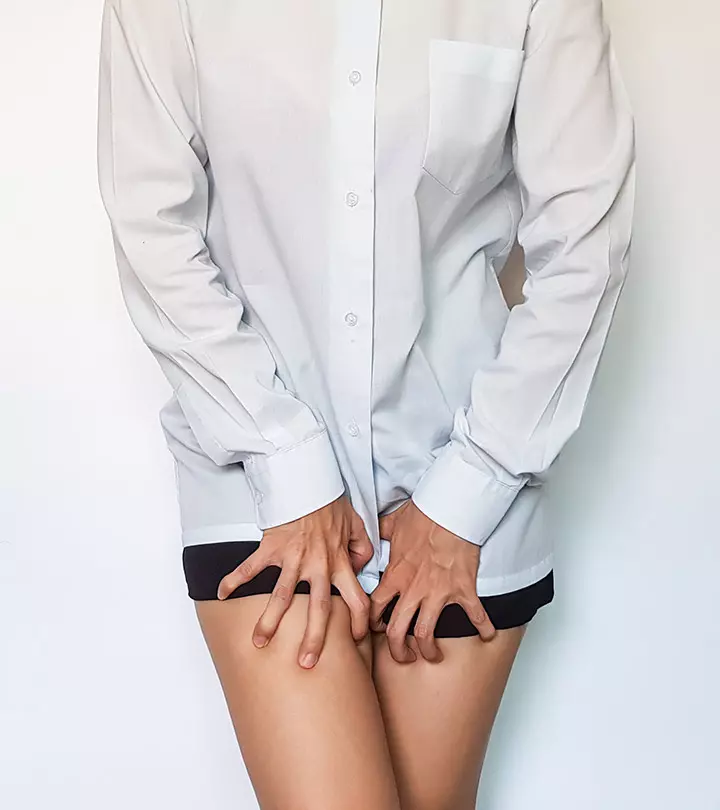
Image: Shutterstock
Jock itch can be uncomfortable and dealing with it might seem frustrating. This itchy rash usually occurs in the groin area and is common in people who sweat a lot. Thankfully, several home remedies for jock itch can offer much-needed relief. They can help soothe itching and redness associated with the condition and may also prevent it from spreading. This article lists the best home remedies for jock itch and explores the causes, symptoms, risk factors, and ways to diagnose it. Keep reading!
In This Article
Home Remedies To Treat Jock Itch
1. Apple Cider Vinegar
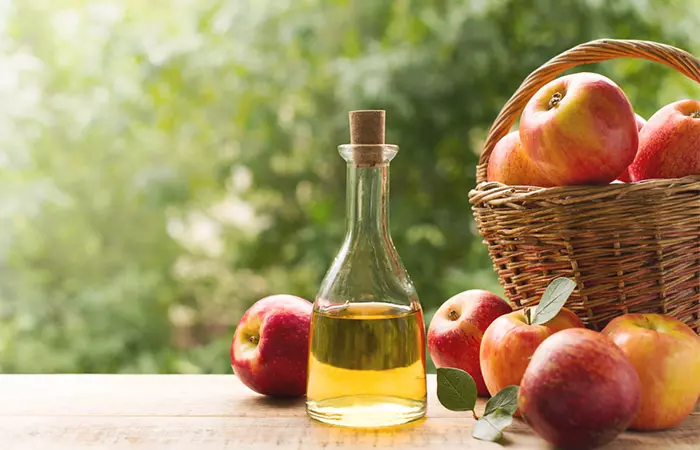
Apple cider vinegar possesses antifungal and antimicrobial properties (1). These properties can help prevent the jock itch from spreading, thereby assisting in its healing.
You Will Need
- Apple cider vinegar
- Cotton ball
What You Have To Do
- Dilute the apple cider vinegar with water.
- Soak a cotton ball in the diluted vinegar. Place the cotton ball on the affected area and press gently.
- Secure it with a band-aid and keep it on for a few hours.
- Rinse the affected area thoroughly with water.
How Often You Should Do This
Do this 2 times daily.
2. Garlic

Garlic contains bioactive compounds, such as ajoene and allicin. They have antifungal properties that fight the infection and can alleviate the symptoms of jock itch (2).
You Will Need
- 4-5 cloves of garlic
- 100 mL of olive oil
What You Have To Do
- Peel the cloves of garlic and crush them.
- Add the crushed garlic to a heated saucepan with 100 mL of olive oil.
- Heat for about 3-5 minutes.
- Strain the oil once it cools down.
- Apply this oil to the rash and cover the area with a gauze.
- Leave it on for 15-20 minutes before rinsing thoroughly with water.
How Often You Should Do This

You can use this remedy 2-3 times a day until the rash heals.
3. Tea Tree Oil
Tea tree oil
has antimicrobial and anti-inflammatory properties (3). This may help reduce the infection caused by jock itch, thus promoting faster healing of the rash.
You Will Need
- A few drops of tea tree oil
- Warm water
What You Have To Do
- Use warm water to dilute the tea tree oil.
- Apply it to the rash and leave it on for about 20 minutes.
- Rinse thoroughly with lukewarm water and pat dry.
How Often You Should Do This
Repeat 2-3 times daily.
4. Honey
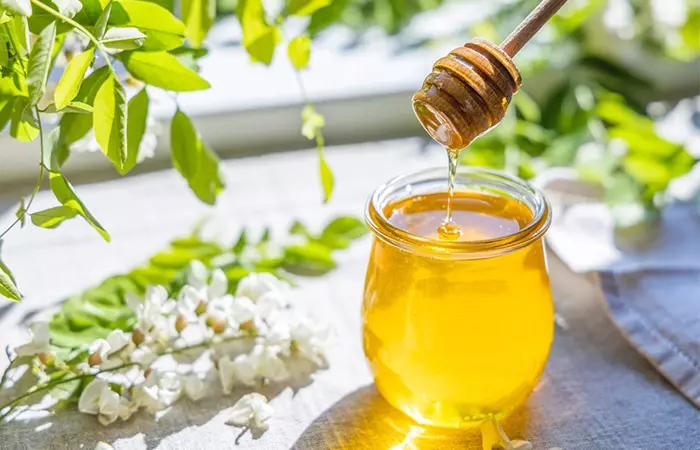
Honey is one of the oldest natural remedies for fungal infection. It possesses antifungal properties that can fight the infection caused by jock itch (4), (5).
You Will Need
- A sterile cotton ball or gauze
- One tablespoon of honey
What You Have To Do
- Dip the cotton ball into the honey.
- Apply it to the infected area.
- Repeat this several times daily, changing the cotton ball with every use.
How Often You Should Do This
You can repeat this 3-4 times daily.
5. Calendula
Calendula extracts are known to exhibit antifungal properties (6). These can help mitigate the rash caused by the fungal infection.
You Will Need
- A sterile cotton ball or gauze
- 1 tablespoon of calendula oil
What You Have To Do
- Dip the cotton ball into calendula oil.
- Apply the oil to the infected area.
- Repeat several times by changing the cotton ball for every use.
How Often You Should Do This
Repeat 3-4 times.
6. Lavender Oil
Lavender oil possesses fungistatic and fungicidal properties (7) (8). These properties may help in mitigating the infection that causes jock itch.
You Will Need
- A sterile cotton ball or gauze
- 2-3 drops of lavender oil (and a few drops of coconut oil)
What You Have To Do
- Mix two to three drops of lavender oil with a few drops of coconut oil in a bowl.
- Dip the cotton ball into the mixture.
- Apply the mixture to the infected area.
- Repeat multiple times daily, ensuring you use a new cotton ball every time.
How Often You Should Do This
You may try this remedy 3-4 times daily.
7. Coconut Oil
Lauric acid is the main component of coconut oil that exhibits antifungal properties (9). This can help in managing and preventing further infection related to jock itch.
You Will Need
1 teaspoon of virgin coconut oil
What You Have To Do
- Apply a teaspoon of virgin coconut oil to the affected area.
- Leave it on the rash for a few hours.
How Often You Should Do This
Repeat 2 times daily for best results.
 Quick Tip
Quick Tip8. Aloe Vera
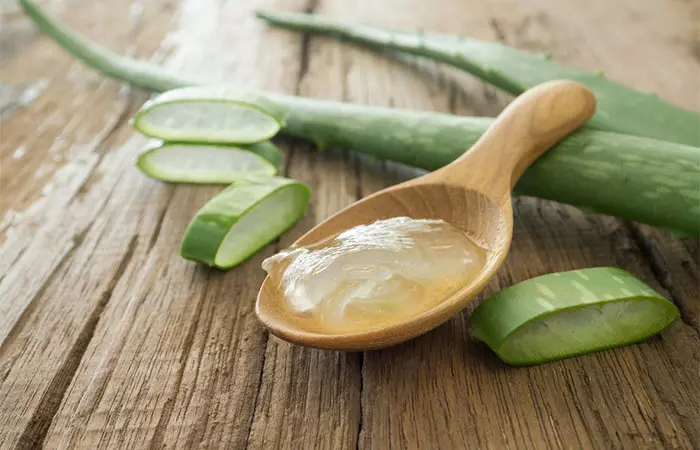
Aloe vera possesses antifungal and antiseptic properties (10). This can help inhibit the fungal infection that causes jock itch and also prevent further infection (11).
You Will Need
½ teaspoon of aloe vera gel
What You Have To Do
- Apply aloe vera gel to the area with the rash.
- Leave it on for a while before you rinse with water.
How Often You Should Do This
Apply the gel on the rash 2 times daily.
9. Lemon Essential Oil
Studies show that lemon essential oil can function as a potent antifungal agent (12). Its antifungal properties can help in fighting the infection that causes jock itch.
You Will Need
- 2-3 drops of lemon essential oil
- 1-2 drops of carrier oil
- Cotton ball
What You Have To Do
- Mix the lemon essential oil with the carrier oil and dip the cotton ball into the mixture.
- Apply the mixture to the rash and leave it on for 20 minutes.
- Wash thoroughly with water.
How Often You Should Do This
You can apply this oil onto the rash once daily.
Caution: Lemon oil can cause skin irritation. Make sure to do a patch test before using this remedy.
10. Witch Hazel
Witch hazel contains bioactive compounds that exhibit antimicrobial properties (13). These compounds can help manage the infection that causes jock itch.
You Will Need
- Witch hazel extract
- A sterile cotton ball or Q-tip
What You Have To Do
- Dip the cotton ball or Q-tip into the witch hazel extract.
- Apply to the rash and leave it to dry.
How Often You Should Do This
You may apply this to the affected area 2-3 times daily.
11. Petroleum Jelly
Petroleum jelly contains petrolatum that exhibits antimicrobial and moisturizing properties (14). These properties can help treat jock itch.
You Will Need
1 tablespoon of petroleum jelly
What You Have To Do
- Apply petroleum jelly to the rash.
- You can cover the area with a Band-aid and leave it on overnight.
How Often You Should Do This
You can repeat this until the rash is healed.
12. Onion
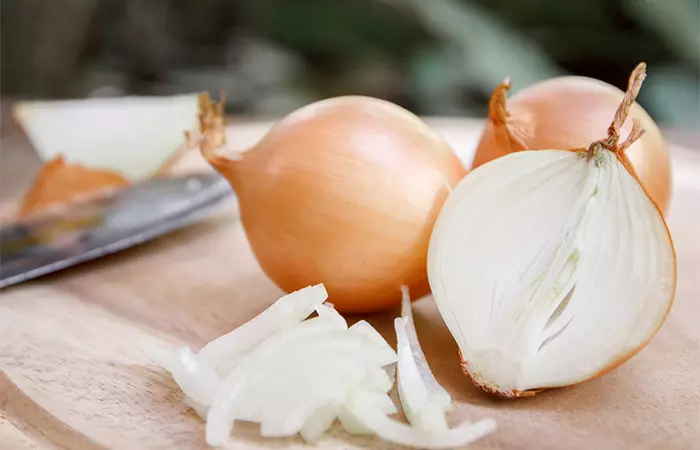
Onions contain allicin, an antifungal peptide. This bioactive compound shows potent inhibitory activity on several fungal infections (15). Hence, it may help alleviate the symptoms associated with jock itch.
You Will Need
- ½ onion
- Cotton pad
What You Have To Do
- Finely grate half an onion and squeeze out the juice from it.
- Soak a cotton pad in this juice and place it on the rash.
- Leave it on for 20 minutes before washing with water.
How Often You Should Do This
You can repeat this until the rash heals.
Caution: Onions may cause a stinging sensation. Make sure to do a patch test before employing this remedy.
13. Neem Leaves
Neem leaves
and their constituents have antifungal and anti-inflammatory properties (16). This can help relieve itching.
You Will Need
- Neem leaves
- Water
What You Have To Do
- Prepare a decoction of 1 part neem leaves and 16 parts water. Boil it under the quantity reduced to half.
- Filter and allow the mixture to cool down. You can use this decoction within 24 hours or store it in the refrigerator and use it within 72 hours.
- Take a cotton swab, dip it in the decoction, and apply to the affected area.
How Often You Should Do This
You can use this 1-2 times a day.
These natural remedies can help you address the discomfort caused by jock itch. However, it’s also important to understand what exactly is the condition and what causes it. This will help you prevent its occurrence in the first place. Keep reading to learn more.
What Is Jock Itch?
Jock itch is an infection caused by fungi. It affects the skin near the genital area. It manifests itself in the form of a stinging rash and is common among people who sweat a lot (such as athletes).
The medical term for jock itch is tinea cruris. It occurs in the groin area, inner thighs, and buttocks. It occurs mostly among men, although women can also experience it. Jock itch is a contagious infection. It can spread by close skin contact or by sharing clothes and accessories like socks or towels.
 Trivia
TriviaWe will now look at the various causes of jock itch.
What Causes Jock Itch?
Jock itch is caused due to:
- Warmth near the inner thighs and groin area, which may lead to a fungal skin infection
- Skin friction or chafing
- Excessive perspiration or moisture in the groin area
- Tight clothing and undergarments that keep sweat trapped
Any or all of the above factors can lead to jock itch. Let us now see who are more likely to contract this infection.
Risk Factors Of Jock Itch
If you are an athlete or engage in intensive workouts, you are more likely to contract jock itch. The infection can also occur if you have issues with excessive perspiration.
Other factors include:
- Gender: You are more likely to contract jock itch if you are a man.
- Body Weight: People who are overweight are more likely to have jock itch. This can be attributed to a greater number of folds on their skin where they are likely to contract an infection.
- Profuse Sweating: Excessive moisture on your skin due to sweating can also cause the fungal infection.
- Age: If you are a teenager, you are more likely to have jock itch. This is because teenagers are more inclined to be involved in physical activities.
- Wearing Tight Clothing And Underwear: Tight clothes can trap moisture and create an environment conducive for a fungal infection.
- Diabetes: People with diabetes are susceptible to skin infections like jock itch.
If you think you may have a risk factor, you need to be wary of the symptoms.
What Are The Symptoms Of Jock Itch?
Jock itch is characterized by a red and itchy rash. Typically, it first shows its signs on the inner thighs, eventually forming a ring-like pattern. You will observe that the center of the rash looks healed as the rash spreads. A red border will appear, characterized by a line of blisters.
If the rash continues to spread, it may infect the groin area, thighs, and buttocks. However, it usually spares the scrotum.
The following signs accompany the red rash:
- Itching and burning sensation near the rash.
- Scaling and flaky skin.
- Sometimes, the rash will not respond to most itch-relieving creams.
Let us now take a look at how jock itch is diagnosed.
How Can You Diagnose Jock Itch?
Just looking at the rash is enough for doctors to diagnose jock itch. In some cases, the doctor may suggest that you send a skin sample to the lab for closer examination.
The doctor may also prescribe certain medications. What medication can you take to treat jock itch? Read on to find out.
Medications For Treating Jock Itch
The treatment for jock itch is reasonably simple. It must tackle the rash and the uncomfortable itching sensation. Mostly, jock itch responds to over-the-counter medication. This could include the use of antifungal ointments, sprays, or lotions.
However, in certain cases, such medication does not take care of the rash. You must consult your doctor for an antifungal medication with a higher dosage.
When To Visit Your Doctor
Jock itch is not a serious condition, but if it persists longer than it should, you must visit your doctor. Also, if over-the-counter medication fails to show results, a visit to the doctor is necessary.
In addition to visiting the doctor, you can also make use of certain simple and effective home remedies.
These were some natural remedies you can use for your jock itch treatment at home. But what can kill jock itch fast, these home remedies or medications? Find out in the next section.
What Kills Jock Itch Fast?
Whether home remedies or medications kill jock itch fast depends on the severity of the infection. If you have mild symptoms, home remedies may be effective. However, they may not be a quick solution for moderate to severe infections. In such cases, medication is generally faster in providing relief. Research suggests that the use of topical antifungal for 4 weeks may help treat jock itch effectively (17). Another study found that 1% antifungal creams may also help treat the infection safely (18). However, avoid using these medications without the recommendation of a doctor.
Preventing Jock Itch
Here are a few tips to prevent a jock itch:
- Personal care and good hygiene habits are the best preventative factors. Maintain basic hygiene by keeping your body clean.
- Try to stay as dry as you can. Moisture increases the chances of contracting a fungal infection.
- Keep your inner thighs and the groin area free of moisture.
- Use a powder after activities like a workout session to facilitate moisture absorption.
- Do not wear tight-fitting underwear as this can allow moisture to build up. Wear clean undergarments at all times.
- Avoid sharing personal items like towels, socks, etc. as this can increase the risk of spreading the infection.
- Keep your feet covered in public spaces (such as showers or pools) to avoid the risk of infection.
- People with a weak immune system are more susceptible to fungal infections. Hence, it is important to take care of diet and lifestyle. Limit or reduce intake of simple carbohydrate foods. Stick to leafy vegetables, nuts, and lean protein. Reduce the intake of salt and sugar. Avoid fried and spicy foods.
A blogger shared her experience with jock itch which affected her belly, breasts, and crotch. After years of struggle, she discovered the best way to prevent jock itch was to dry herself after each shower and apply talc to the susceptible areas. She writes, “I do keep Lotramin spray & powder on hand to deal with the occasional flare-up, but the talc is the best preventative I’ve found (i).”
Infographic: Easy Remedies To Get Rid Of Jock Itch
Jock itch can be very irritating and can even spread as it is a contagious infection. To get rid of jock itch, use the home remedies as discussed in the article in addition to the treatment prescribed by the doctor.
To know the easiest remedies to get rid of jock itch, check out the infographic below. Illustration: StyleCraze Design Team
Tinea cruris, or jock itch, is a contagious fungal infection that affects the skin around the genitals and presents as a red and itchy rash. In most cases, over-the-counter antifungal ointments can help get rid of the rash. However, you may also apply home remedies for jock itch to accelerate healing, get relief from the burning sensation, and prevent the further spread of the infection. Home remedy ingredients like apple cider vinegar, garlic, calendula, honey, tea tree oil, lavender oil, witch hazel, and aloe vera contain antifungal or antimicrobial properties that can arrest jock itch and help heal it.
Frequently Asked Questions
Is jock itch contagious?
Yes, it is contagious. Jock itch can easily spread through close skin contact or by sharing personal items of clothing.
Which is the best antifungal cream for jock itch?
The best topical antifungal creams are miconazole, clotrimazole, or terbinafine as they can inhibit the aggravation of the fungal infection (19).
How long does jock itch take to heal?
Jock itch most often heals in 10 days after you start using the prescribed medications and/or the natural remedies.
Does scratching make jock itch worse?
If you have jock itch, you must avoid touching or scratching the affected area. This prevents it from getting worse. It also prevents the infection from spreading to other parts of your body.
Is a yeast infection the same as jock itch?
Jock itch is a type of yeast infection. Vaginal yeast infections seen in women are caused by a different type of fungus known as Candida albicans.
Is jock itch a sexually transmitted disease?
Jock itch is not usually considered a sexually transmitted disease as it can also spread through sharing other infected items.
Does hot water hurt or help jock itch?
Using hot water can irritate the rash and increase the itching. Use warm water for showering and washing.
Does shaving help jock itch?
Shaving the pubic areas will keep it clean and dry. It can help reduce the chances of developing a jock itch infection. However, take measures before and after shaving to avoid skin chafing.
Is petroleum jelly safe to use for jock itch?
Non-adulterated petroleum jelly can help relieve the itching and keep you from scratching when applied at night before going to sleep.
How do I reduce the darkness of my skin after jock itch infection?
Applying aloe vera gel even after the infection has cleared can help to restore the natural health of your skin and reduce darkness as well.
Key Takeaways
- Jock itch is a fungal infection that affects the male genital region.
- It can resemble a rash that is usually a result of sweating, moisture accumulation, tight-fitting clothes, or excessive friction.
- Consult a doctor for medications or apply antifungal creams, lotions, or sprays to treat the rash.
- Essential oils like lemon and lavender can be applied due to their antifungal properties
- Maintain good hygiene by keeping the area dry and away from moisture.
- Wear clean and comfortable undergarments.
Illustration: Natural Remedies To Get Rid Of Jock Itch
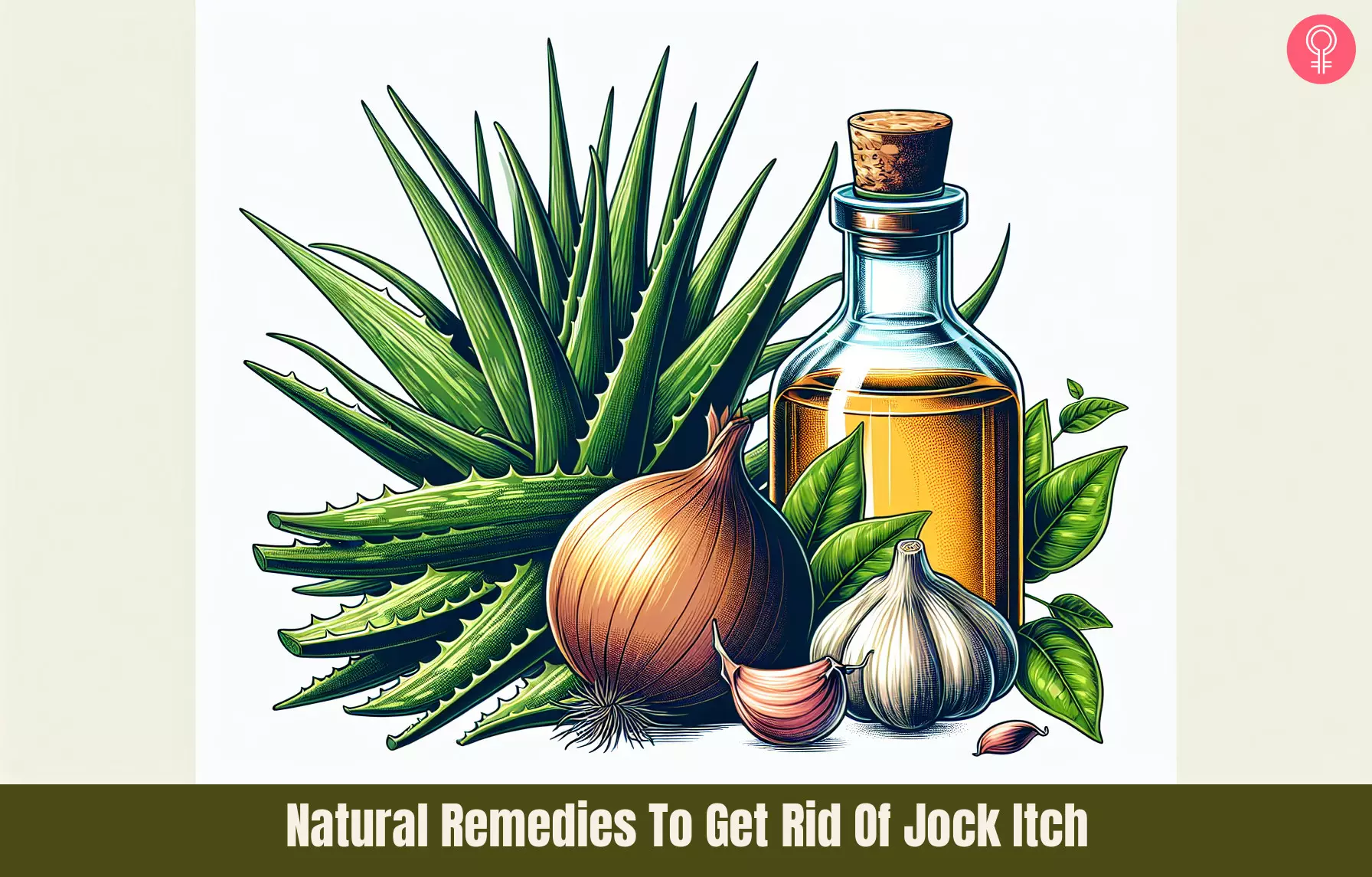
Image: Dall·E/StyleCraze Design Team
Learn about jock itch – its causes, signs and symptoms, diagnosis, and treatment. With the right information, you will be able to understand and manage this common skin condition.
Personal Experience: Source
StyleCraze's articles are interwoven with authentic personal narratives that provide depth and resonance to our content. Below are the sources of the personal accounts referenced in this article.
i. Day in the Life: Shower, Chafing, & Jock Itchhttps://living400lbs.com/2008/09/24/day-in-the-life-shower-chafeguard/
References
Articles on StyleCraze are backed by verified information from peer-reviewed and academic research papers, reputed organizations, research institutions, and medical associations to ensure accuracy and relevance. Read our editorial policy to learn more.
- Antimicrobial activity of apple cider vinegar against Escherichia coli, Staphylococcus aureus and Candida albicans; downregulating cytokine and microbial protein expression, Scientific Reports, US National Library of Medicine, National Institutes of Health.
https://www.ncbi.nlm.nih.gov/pmc/articles/PMC5788933/ - Ajoene the main active compound of garlic (Allium sativum): a new antifungal agent. Revista Iberoamericana de Micología, US National Library of Medicine, National Institutes of Health.
https://pubmed.ncbi.nlm.nih.gov/16854181/ - Commercial Essential Oils as Potential Antimicrobials to Treat Skin Diseases, Evidence-Based Complementary and Alternative Medicine, US National Library of Medicine, National Institutes of Health.
https://www.ncbi.nlm.nih.gov/pmc/articles/PMC5435909/ - Antifungal activity of four honeys of different types from Algeria against pathogenic yeast: Candida albicans and Rhodotorula sp. Asian Pacific Journal of Tropical Biomedicine, US National Library of Medicine, National Institutes of Health.
https://www.ncbi.nlm.nih.gov/pmc/articles/PMC3609343/ - An alternative treatment for pityriasis versicolor, tinea cruris, tinea corporis and tinea faciei with topical application of honey, olive oil and beeswax mixture: an open pilot study. Complementary Therapies in Medicine, US National Library of Medicine, National Institutes of Health.
https://pubmed.ncbi.nlm.nih.gov/15130571/ - Antifungal activity of the essential oil from Calendula officinalis L. (asteraceae) growing in Brazil, Brazilian Journal of Microbiology, US National Library of Medicine, National Institutes of Health.
https://www.ncbi.nlm.nih.gov/pmc/articles/PMC3768360/ - Antifungal activity of Lavandula angustifolia essential oil against Candida albicans yeast and mycelial form. Medical Mycology, US National Library of Medicine, National Institutes of Health.
https://pubmed.ncbi.nlm.nih.gov/16178366/ - Antifungal Effect of Lavender Essential Oil (Lavandula angustifolia) and Clotrimazole on Candida albicans: An In Vitro Study, Scientifica, US National Library of Medicine, National Institutes of Health.
https://www.ncbi.nlm.nih.gov/pmc/articles/PMC4621348/ - In vitro evaluation of antifungal activity of monolaurin against Candida albicans biofilms, PeerJ, US National Library of Medicine, National Institutes of Health.
https://www.ncbi.nlm.nih.gov/pmc/articles/PMC4924139/ - ALOE VERA: A SHORT REVIEW, Indian Journal of Dermatology, US National Library of Medicine, National Institutes of Health.
https://www.ncbi.nlm.nih.gov/pmc/articles/PMC2763764/ - Comparison of antifungal effect of Aloevera gel and Triphala: An in vitro study, Journal of Indian Academy of Oral Medicine and Radiology, National Institutes of Health.
https://lww.com/pages/default.aspx - Biological Activities and Safety of Citrus spp. Essential Oils, International Journal of Molecular Sciences, US National Library of Medicine, National Institutes of Health.
https://www.ncbi.nlm.nih.gov/pmc/articles/PMC6073409/ - Antioxidant and potential anti-inflammatory activity of extracts and formulations of white tea, rose, and witch hazel on primary human dermal fibroblast cells, Journal of Inflammation, US National Library of Medicine, National Institutes of Health.
https://www.ncbi.nlm.nih.gov/pmc/articles/PMC3214789/ - Petrolatum: Barrier repair and antimicrobial responses underlying this “inert” moisturizer. The Journal of Allergy and Clinical Immunology, US National Library of Medicine, National Institutes of Health.
https://pubmed.ncbi.nlm.nih.gov/26431582/ - Isolation of allicepin, a novel antifungal peptide from onion (Allium cepa) bulbs. Journal of Peptide Science, US National Library of Medicine, National Institutes of Health.
https://pubmed.ncbi.nlm.nih.gov/15113089/ - Antifungal activity of different neem leaf extracts and the nimonol against some important human pathogens, Brazilian Journal of Microbiology, US National Library of Medicine, National Institutes of Health.
https://www.ncbi.nlm.nih.gov/pmc/articles/PMC3768785/ - Management of tinea corporis, tinea cruris, and tinea pedis: A comprehensive review, US National Library of Medicine, National Institutes of Health.
https://www.ncbi.nlm.nih.gov/pmc/articles/PMC4804599/ - Topical clotrimazole cream for the treatment of tinea cruris, US National Library of Medicine, National Institutes of Health.
https://www.ncbi.nlm.nih.gov/pmc/articles/PMC7676513/ - What is the best way to treat tinea cruris? The Journal of Family Practice, US National Library of Medicine, National Institutes of Health.
https://pubmed.ncbi.nlm.nih.gov/16510062/
Read full bio of Vd. Naveen Sharma
Read full bio of Shaheen Naser
Read full bio of Ramona Sinha
Read full bio of Monomita Chakraborty








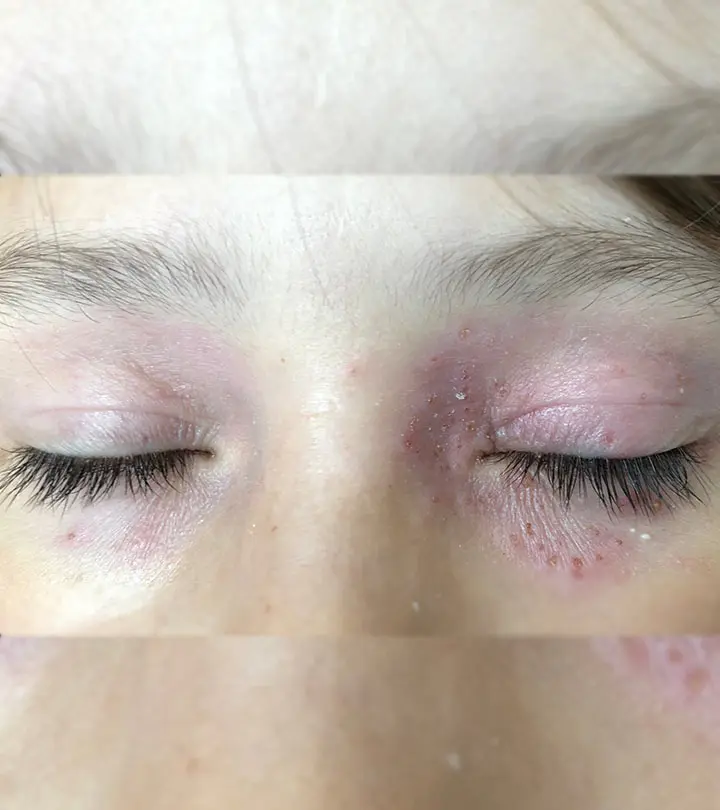
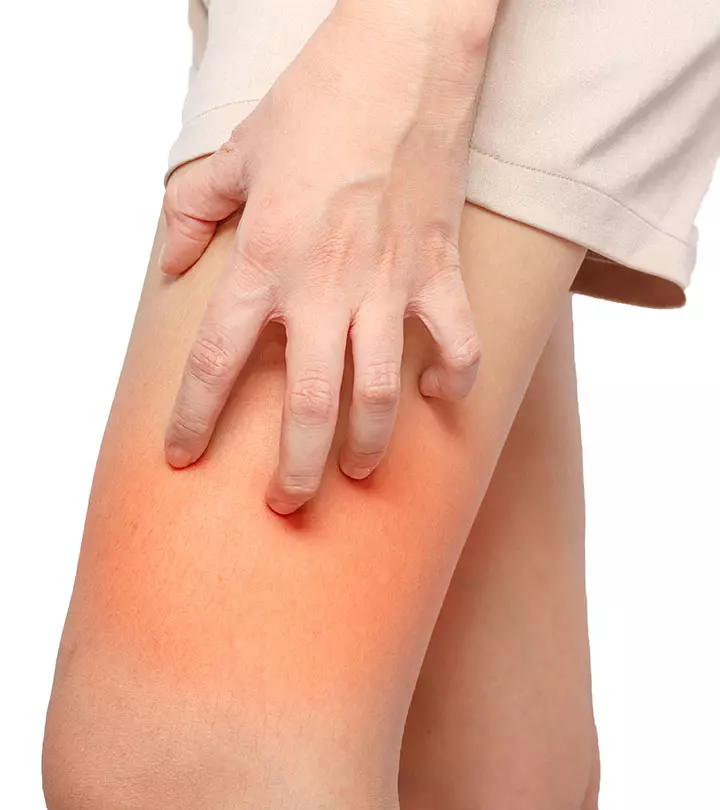
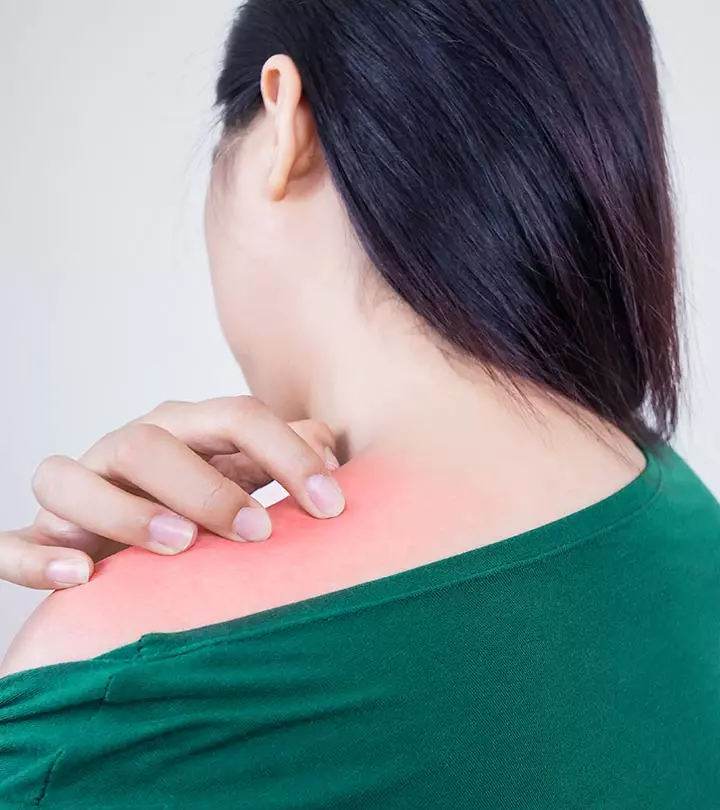

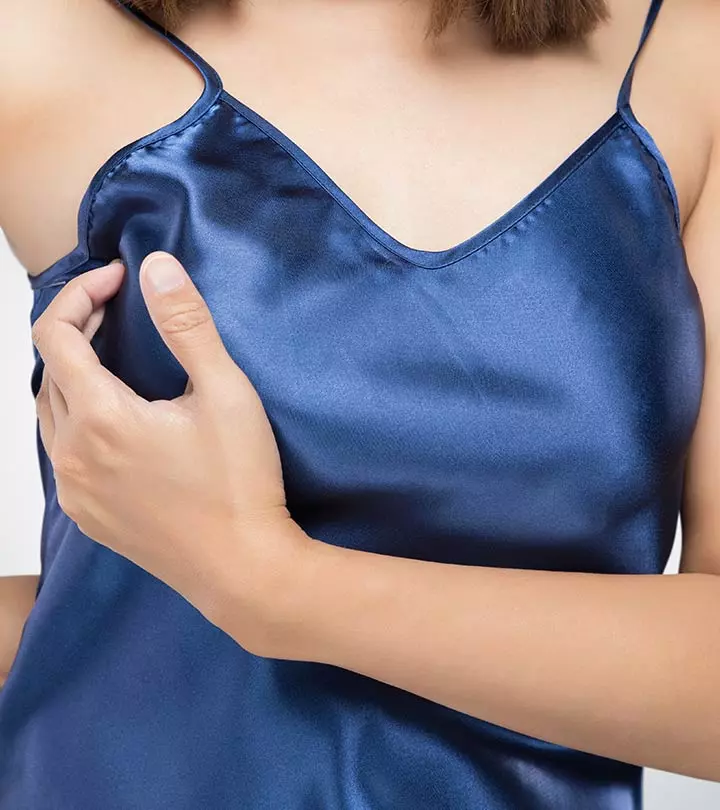

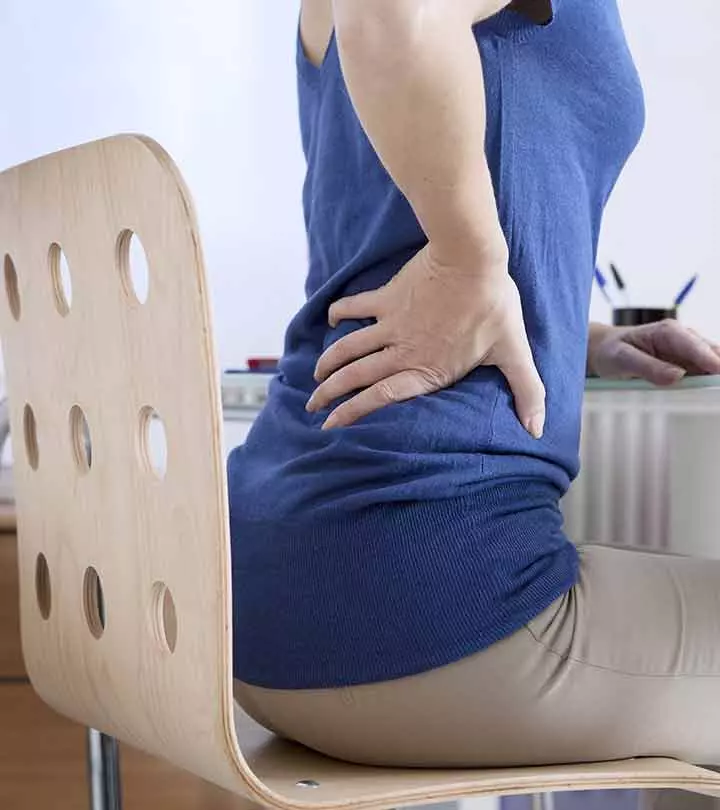
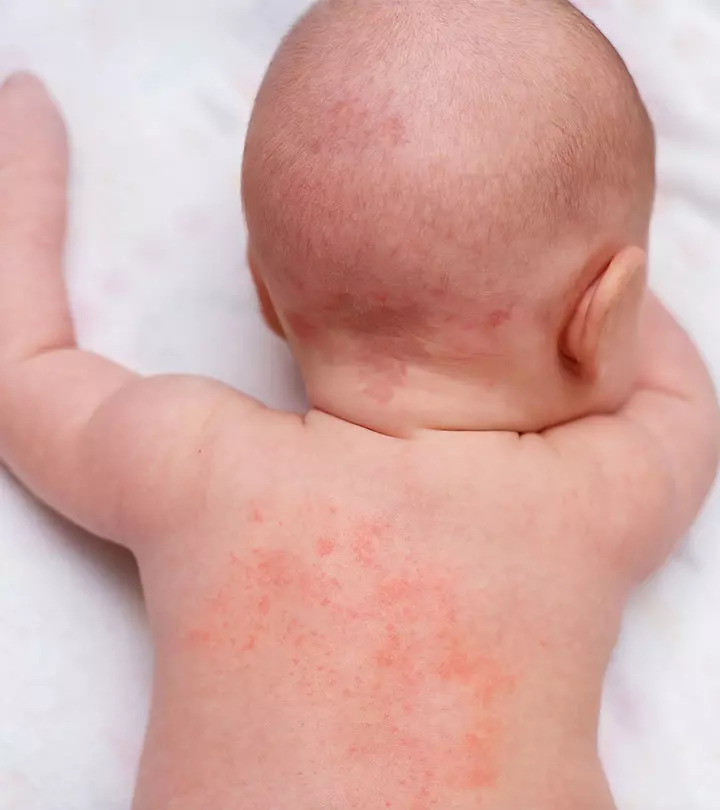
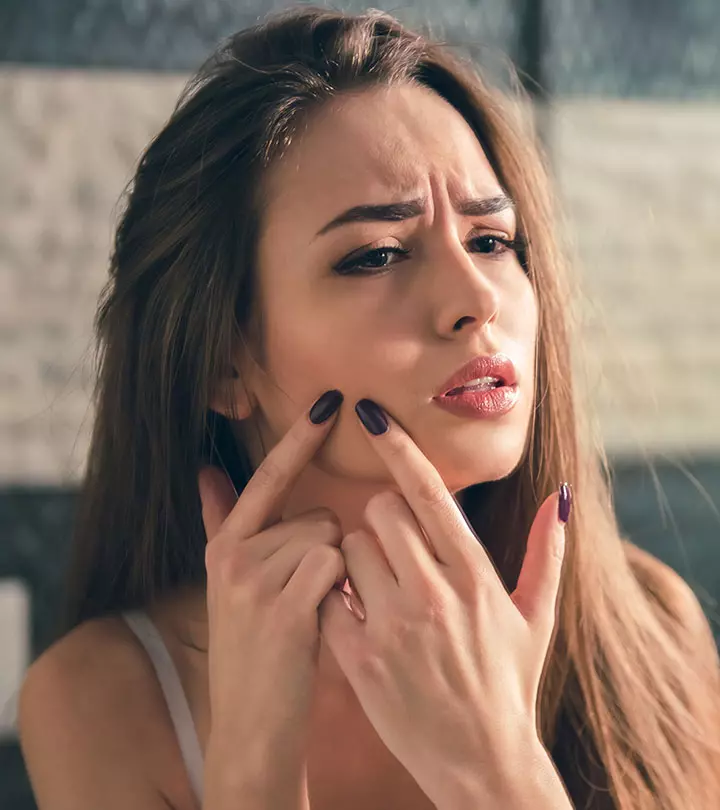

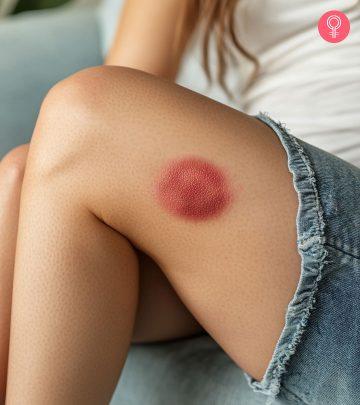

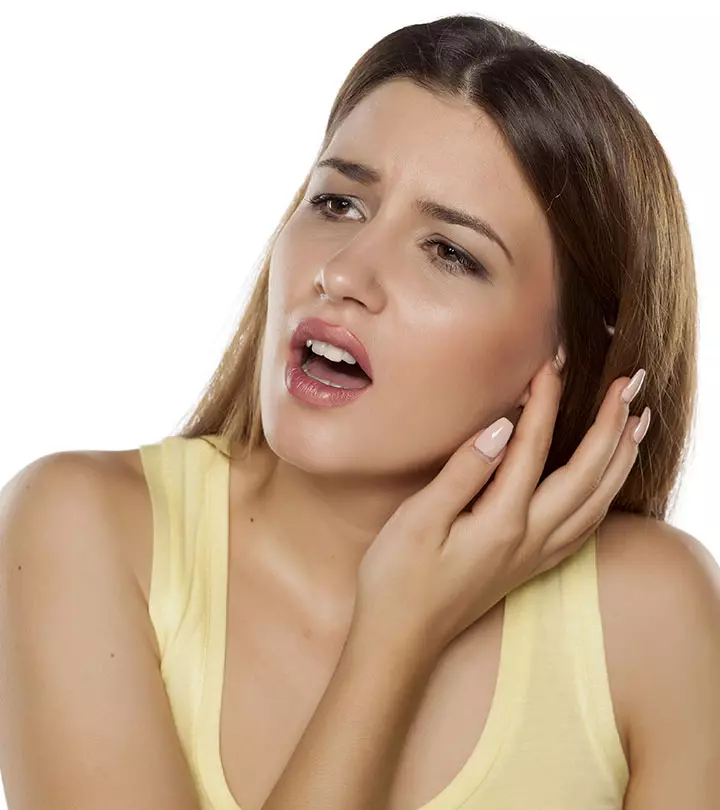
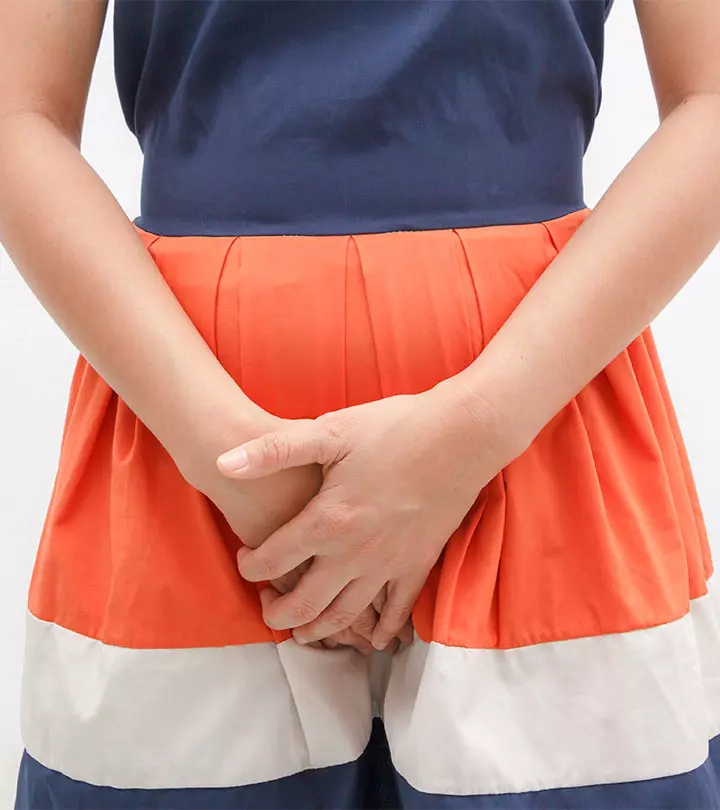
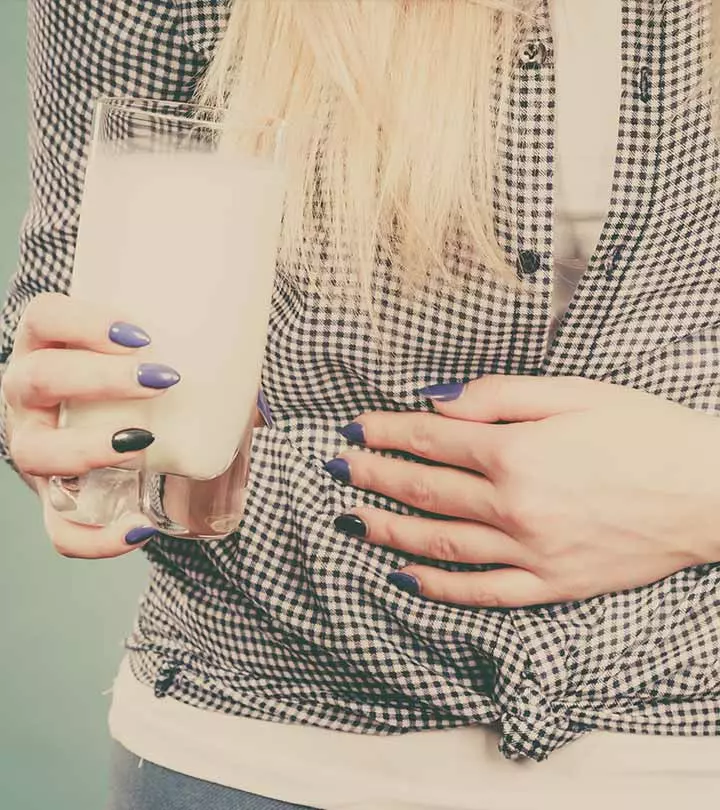
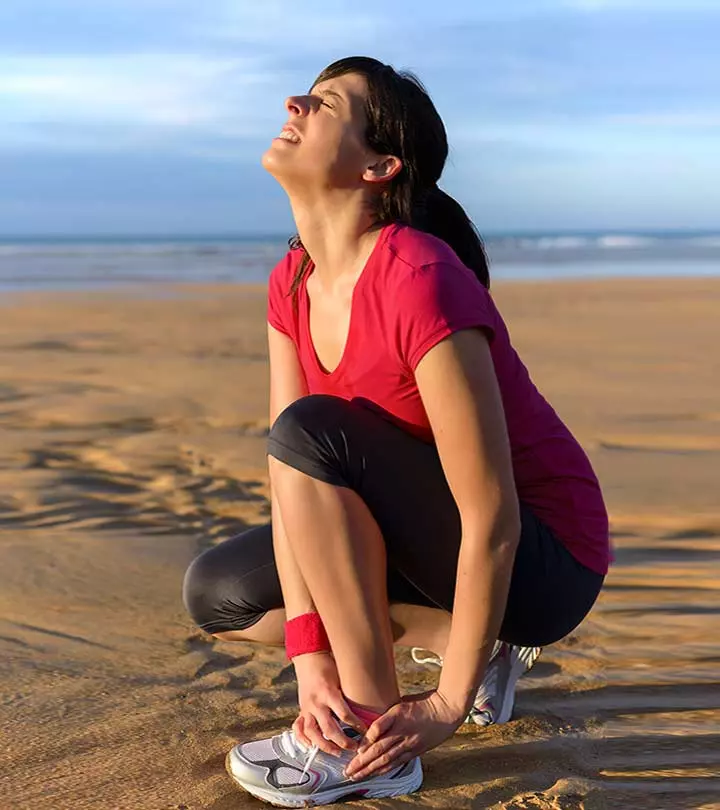
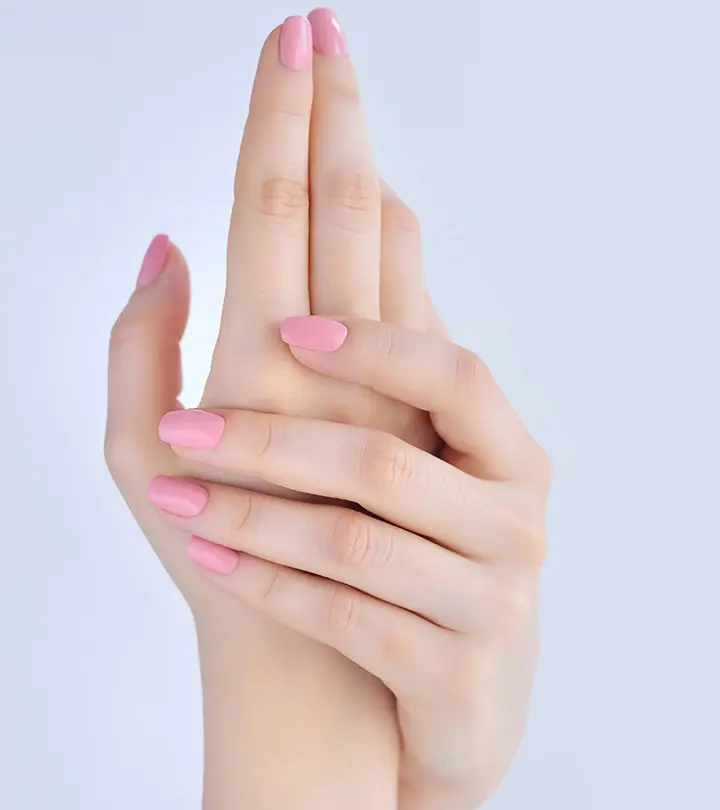
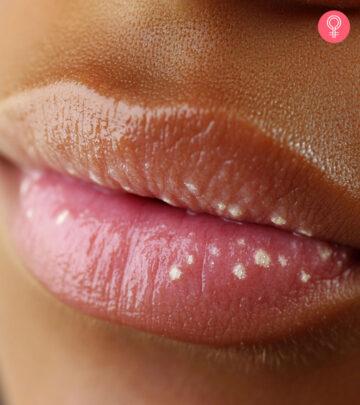
Community Experiences
Join the conversation and become a part of our empowering community! Share your stories, experiences, and insights to connect with other beauty, lifestyle, and health enthusiasts.